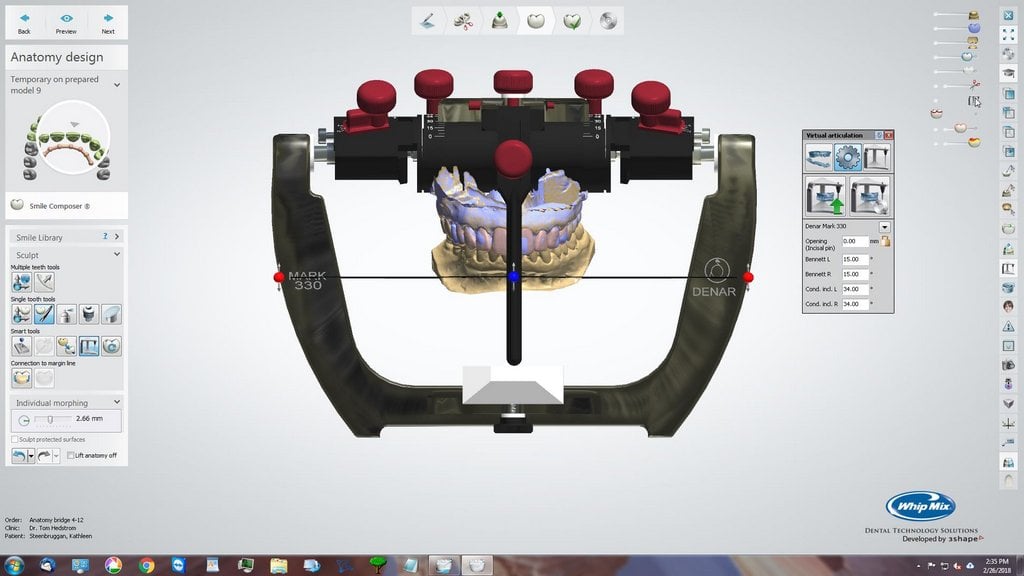With each case you start - single tooth crown to complete full mouth restoration - your goal is always the same; to deliver a case that is beautiful, requires minimal-to-no adjustments during delivery, and has immediate patient acceptance. Over many years of research, study and trial and error by many dentists and technicians before us, we think we understand when it is okay to work on a case without the use of a face-bow registration. So, when is that? When is it absolutely important to include a face-bow registration? Let’s start by determining what a face-bow registration does for us.
What is the Purpose of a Face-bow Registration?
I have learned that a face-bow provides three important elements that can be incorporated into the articulator. First, it will permit the maxillary cast to be mounted in the same relationship on the articulator as the upper teeth are in the patient. Second, it allows for an accurate record of the maxillary distance from the condylar axis. This position is critical for this reason; when the lower jaw opens and closes, the center of the condyle rotates around what is known as the mandibular hinge axis. Rotating around this hinge axis produces an arc of closure specific to that patient. Using a face-bow helps capture this distance, and when brought over to the articulator and mounted, it re-establishes that same arc of closure for the patient. Third, a face-bow registration records the occlusal plane so we can diagnose cants and other esthetic discrepancies to correct for functional or esthetic purposes. Capturing these positions are invaluable records that place the patients bite and movements in front of the technician or dentist on an articulator.
If you do nothing more than mount the case using a face-bow, you have at least captured the patient’s true angle and condylar distance as it relates to their mouth. By doing this, you are closer to ensuring you are replicating the movements of the mandible as it relates to the patient. By incorporating additional records obtained from the patient, you can rest assure that occlusal paths created on the articulator are closer to what is found in the mouth.
Then, Why Don't We Use Them?
If we know making a face-bow registration makes our job so much easier, then why isn’t it part of the normal process? We know that over 80% of dental practices do not obtain a face-bow registration to go along with their cases. Even those cases that fall into the categories that should demand one - like anterior open bite cases, full mouth restorative work, and even multiple units located in the posterior segment of the mouth. If, as a dentist, you routinely schedule a 1-1½ hour time slot in your day to deliver a single unit or a posterior case because you have become accustomed to the grinding time, maybe it’s time to consider taking a face-bow registration. If, as a lab technician, if you constantly receive comments back from your dentist about the occlusion being high - especially with posterior cases - then perhaps it’s time to suggest your dentist consider taking and sending a face-bow registration.
Normal time to take a face-bow registration, when trained and prepared, is about 2 minutes. This two minute procedure at the beginning of treatment will save you the hour or more time needed during delivery. Not to mention the stress, embarrassment, lost time, reputation and cost to remake if necessary. Using a face-bow, and a full size semi-adjustable articulator for more complicated cases will save you from all of the negative consequences listed above. You can go home every night knowing that you used all of the tools available to ensure success for you and your customer.











.png)
Leave a comment